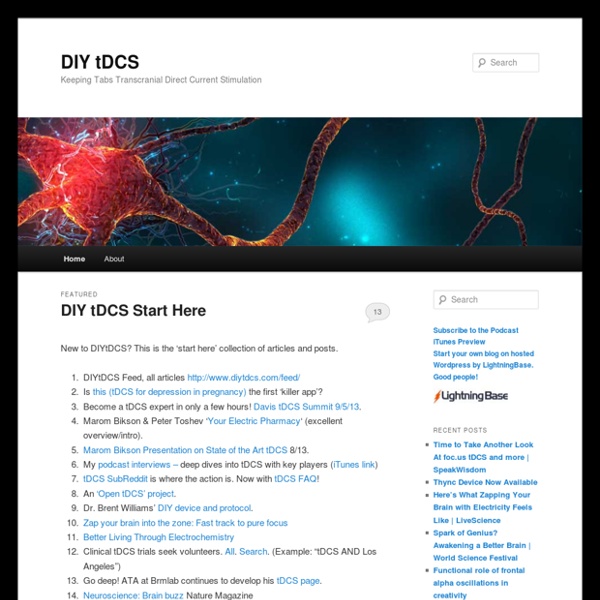DIY tDCS

Cloning & Synthetic Biology
Overview of Traditional Cloning Traditional Cloning refers to the generation of DNA fragments using restriction enzymes, and their subsequent assembly and transformation. The name is derived from the method’s history as the first widely-accepted cloning method. Learn more about the benefits and disadvantages of Traditional Cloning. scroll to see additional videos
NeuroOn: World's first sleep mask for polyphasic sleep by Intelclinic
Apparently Da Vinci, Tesla, Churchill and even Napoleon used polyphasic sleep to rest. It allowed them to fully regenerate, reducing sleep time to 6.5 hours or sometimes just 2 hours. And those guys got things done! NeuroOn is a wearable sleeping mask that measures your biological signals, including: brain waves (EEG - electroencephalography), muscle tension (EMG - electromyography) and eye movements (EOG - electrooculography). All the data collected from a user's sleep is transformed from analogue readings to digital analysis and sent via wireless interface fully compliant with Bluetooth 4.0 LE to a smartphone application. When you sleep, you go through two phases: REM and NREM and one follows the other. Thanks to the use of the newest technologies we were able to create a device that will improve your effectiveness and concentration at work to the best possible levels. NeuroOn will be powered with the inner battery. Play Oh, and jet lag. No more of that! People who helped us the most!
Biology | 7.03 Genetics, Fall 2004 | Lecture Notes
A ajouter au neuroOn !!
Faire un programme pour tester l'amélioration
Related:
Related:



